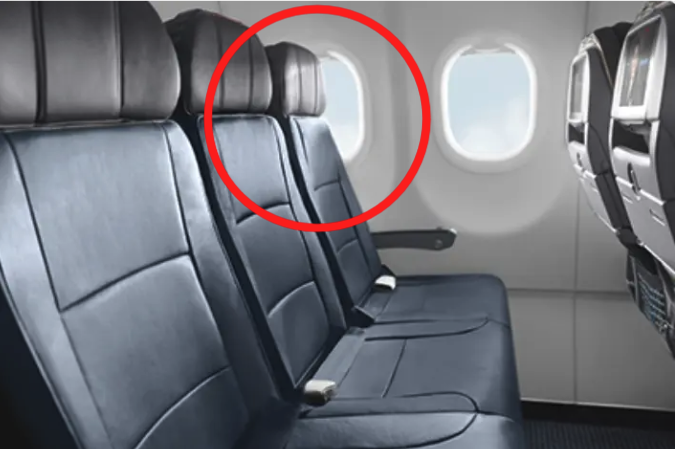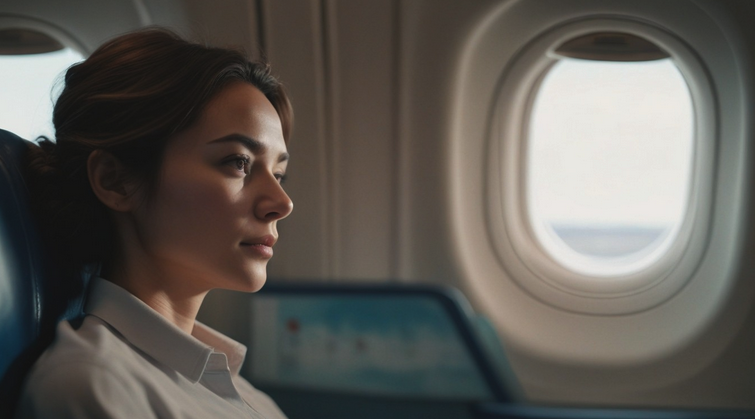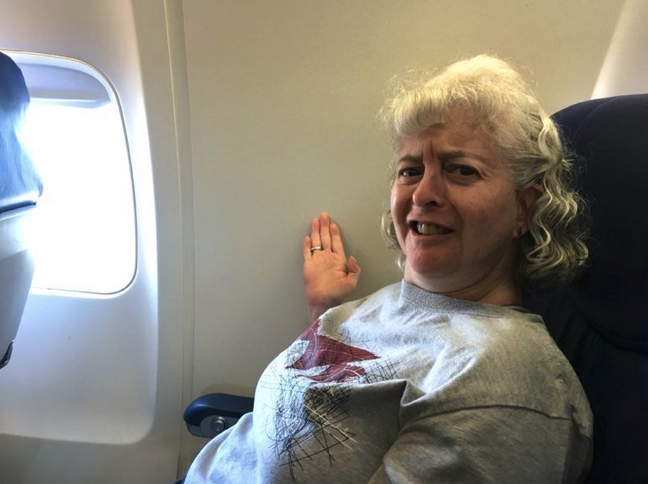Save for those who get to sit in business or first class, the seats on a plane aren’t the greatest. Unless you snagged an exit row, there’s little to no leg room. The amount of padding on your bottom and back is becoming smaller and smaller. Your ability to recline might still be there…or it might not…or it might be significantly less than what it was 5 years ago.
So yeah…you’re certainly not comfortable in your seat, but hey, at least you managed to get a window seat, so you can distract yourself and look out the window. Well, except the window isn’t really aligned with your seat. So you’ve got one window that’s in alignment with the back of your seat…

PC: American Airlines
And another one that’s an awkward distance away, so you kind of need to lean forward to see out of it. Hello, backache!
 This wasn’t always the case, though. There WAS a time, way back when, that the windows and seats on planes were pretty much aligned, and all you needed to do to look out the window was turn your head.
This wasn’t always the case, though. There WAS a time, way back when, that the windows and seats on planes were pretty much aligned, and all you needed to do to look out the window was turn your head.
Service in coach aboard a Pan Am Boeing 707-321. Pan Am’s last 707 service was in 1981 when the type was retired from regular commercial passenger service. Pan Am reintroduced the 707 on October 26, 1983 for a commemorative flight marking its 25th year of commercial jet service. pic.twitter.com/SsaVFdCXK7
— Pan Am (@FlyPanAm) February 27, 2022
So what happened?
Greed.
Airlines eventually realized that if they made the space between plane seats smaller, they could cram more seats in. They didn’t care how much legroom you had (or didn’t have) – selling that many more seats meant making that much more profits! Of course, airline manufacturers were more than happy to comply, since for them too, more seats sold = more money.
A perfect example of this is one of the versions of the Airbus A380. It has two decks and has a seating capacity of 525 passengers in its standard configuration. But it also has a certified capacity configuration to be able to hold 853 passengers.
Similarly, a Boeing 787-10 can accommodate anywhere from 300 to 330 passengers, depending on an individual airline’s seating configuration choices and flight range.
Either way, the placement and number of windows of that Airbus A380 or that Boeing 787-10 remains the same. It’s just how the seats are configured that changes. And then, depending on that seating arrangement, you may have the perfect set-up of seat vs. window…or you may have no window at all.
 Enjoy your flight!
Enjoy your flight!
Want to comment on this post? Great! Read this first to help ensure it gets approved.
Want to sponsor a post, write something for Your Mileage May Vary or put ads on our site? Click here for more info.
Like this post? Please share it! We have plenty more just like it and would love it if you decided to hang around and sign up to get emailed notifications of when we post.
Whether you’ve read our articles before or this is the first time you’re stopping by, we’re really glad you’re here and hope you come back to visit again!
This post first appeared on Your Mileage May Vary

2 comments
Respectfully, adding additional seats on aircraft is not solely about “greed”, but rather about offsetting costs to lower prices. When airlines can offset costs by putting additional seats in aircraft, air travel becomes more affordable for the consumer. Think about ULCC airlines like Spirit, Frontier, and Allegiant – decreased legroom and comfort, but fares as low as $9. It’s all about consumer elasticity of demand; for those who are not willing to sacrifice legroom, there are options for them (Big Front Seats on NK or Stretch seats on F9) albeit at a higher price point. And for consumers like the rest of us, who are price sensitive, the loss of legroom is worth the savings in airfare. It’s a win-win for everyone.
In other words, the “cramming” of seats into aircraft is not a bad thing, but perhaps the best thing to happen to the modern airline industry. Otherwise, if every seat were plush and spacious like the “good old days”, you’d never see an economy fare for $9. 🙂
Delta just posted a $2 BILLION quarterly profit. It’s greed.